
| Print | Back |  |
March 02, 2015 |
 |
Cookies and Pi Six Elements of a Successful Apartment Gardenby Sydney Bone |
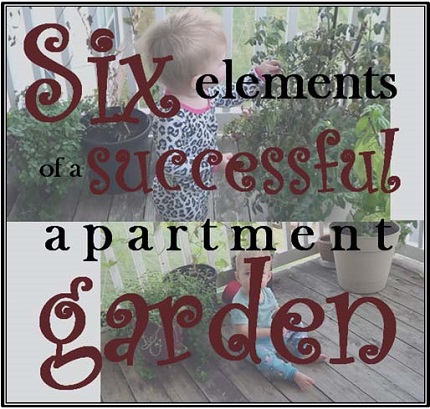
We’ve been told the importance of self-reliance, but projects like gardening and food storage can be overwhelming for those of us living in small spaces. This week, I’d like to talk about the small garden we grew on the balcony of our apartment.
Did you know they have a garden on the International Space Station? Well, sort of.
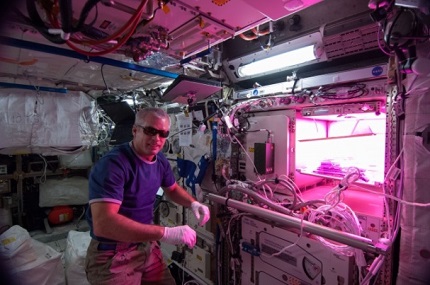
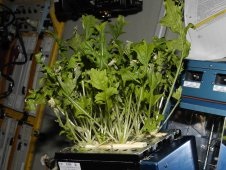
Eventually, NASA hopes the astronauts can eat the food they grow in space, but they’re testing it extensively first. Back on earth, greenhouses at research stations in Antarctica have been producing fresh food for their winter residents for years.
In both cases, the residents of these remote outposts report that the plants help keep their spirits up. I definitely experienced that when I worked for a research greenhouse in college. I grew mostly boring plants like corn, soybeans and wheat, but the greenery was a nice respite from the dark Logan, Utah, winters. And I wore shorts to work in February.
As
a scientist, it fascinates me that plants can overcome microgravity,
a complete lack of natural light and all the torture
research they’re subjected to in labs. In Antarctica, the
plants are grown in water to prevent contaminating the environment
with soil bacteria. It turns out, as long as plants have their basic
needs met, they can put up with a lot.
So this brings me to May of last year, when we moved to Alabama. I missed the greenhouse, so we made a miniature garden on our porch. Again, I was surprised by how well the plants grew, considering the fact that we didn't have any fancy tools, we planted late, and we were new to the area. Yet again, it came down to meeting the plants’ basic needs.
So, what are the bare minimum requirements for a garden? And how can those of us who don’t have a lot of space, time or money use this information to our advantage?
1. Plants. Duh.
But seriously, selecting the right plants can make a huge difference. Pick something easy to grow and well suited for your area. Tomatoes are an excellent choice. With a little bit of love (and some marigolds to keep the bugs away) they will thrive nearly anywhere.
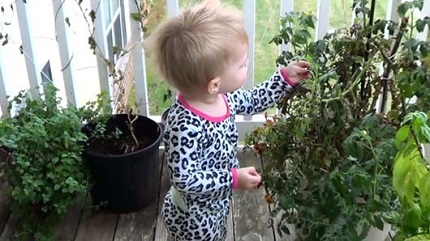
In addition, if you really want to feel the results of the garden, grow expensive foods. Fresh herbs cost a fortune at the grocery store, but they are fairly cheap to grow. Not only does this give you a fresh supply for the entire growing season, but some herbs can be dried or frozen and used year-round.
Instead of Roma tomatoes that go for like a dollar a pound, try cherry tomatoes or a fun, heirloom variety. If space is limited, try dwarf crops.
My little helper loved to pick green tomatoes and push them around the house in her toy stroller. We ate about four tomatoes that summer.
Some plants require a tiny bit of specialized care to reach their full potential. Tomatoes grow best with a tomato cage, although a stick and some twine will work in a pinch. Basil essentially stops growing once it produces seeds, so remember to pick off all the flowers from the plant.
With most herbs, use the small leaves at the tips of the branches for cooking. Pruning the plants in this way keeps them short and bushy, and as an added bonus, the smaller leaves taste better.
2. Growth Medium.
Notice I didn't say dirt or even soil. And there is a difference. Dirt is soil, but without the organic matter. Don’t use either for potted plants. Because they have such a small root zone, they really need to make it count. A soil-less medium is your best bet. That’s a fancy science term for those bags of dirt-like stuff in the garden center — peat, vermiculite, tree bark, coconut fibers and more.
For our porch garden, we wanted a good mix without spending a ton of money. We bought a big bale of peat for twelve bucks and a couple of cheap medium-sized bags of a potting mix. We avoided the small brand-name bags of potting soil mix like the plague. Huge markup, small benefit.
The peat took a bit of work, but it was well worth the cost savings. Because it is hydrophobic (repelled water), it needed to be soaked and mixed thoroughly before planting. That was fine. It gave us a chance to blend the peat with our potting mix and add some nutrients. We just used a liquid plant food and mixed it with the water we were using to soak the peat. Peat is fairly acidic, but mixing it with tap water helped balance the pH.
A quick note about containers: They don’t have to be fancy. At the lab, we used five gallon buckets with a quarter inch hole drilled in the bottom. As long as it has decent drainage, pretty much anything will work.
We got most of the pots for our porch garden at yard sales. We also begged the people at the store to let us take some of their slightly broken pots home with us. In this case, bigger is better. Also, lighter colored pots absorb less heat from the sun. In our climate, that was a good thing.
3. Air
So obviously, plants need carbon dioxide in order to photosynthesize. This is looking like a pretty dumb requirement. You’re probably thinking along the lines, “Well, I know not to strangle my plants with a grocery bag.”
Actually, air is just as important to the roots as it is to the leaves. The roots need oxygen to grow. In addition, well-aerated soil prevents plant diseases and helps nutrients get to the plants.
Perlite or similar products work well, but we used diapers. Brand new, clean ones, so chill. We took out the moisture-absorbing beads and combined them with our peat mixture.
As the beads expand after a good watering and contract as the plant uses the water, they make little spaces in the soil. It’s all explained here. An added benefit is that they help keep moisture in the pot for longer.
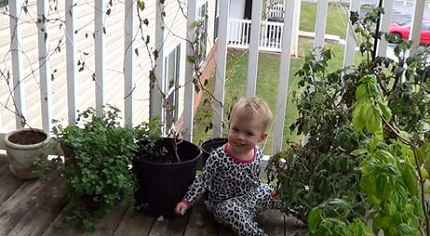
I consider the last three factors on my list to be a troubleshooting guide. If a plant is struggling, blame one or more of those three things.
4. Light
With outdoor plants, the back of the seed packet will tell how much sunlight they need. For indoor plants, the general rule is: the more natural light, the better. Sunlight provides hundreds of times more energy than most indoor lights, so keep the plants near a window if at all possible. In the northern hemisphere, southern windows have the most light. South of the equator, north-facing windows are the best.
5. Watering
Under-watering obviously causes plants to dry up and die, but overwatering can be a problem too. A pot with too much standing water can harbor mildew or plant diseases. Poor drainage can even cause the roots to rot.
Even if the pot has good drainage, overwatering can wash away all of the nutrients a plant needs. If a lot of water rushes out of the bottom of the pot after a watering, that’s bad news. Try adding a little bit of water at a time, to allow the potting mix to really soak it in. Once it starts to trickle out the bottom, stop watering.
6. Nutrients
Plants don’t need vitamins; they produce most of the vitamins we need. However, they do need minerals like nitrogen, phosphorous and iron. If plants have adequate sunlight and water, they probably have a nutrition problem. If the leaves turn yellow or purple, it is almost definitely due to a lack of essential minerals.
Luckily, it’s a fairly easy fix. We just bought a bottle of liquid plant food and mixed a couple tablespoons with the water once or twice a week.
Well, happy gardening!
| Copyright © 2024 by Sydney Bone | Printed from NauvooTimes.com |